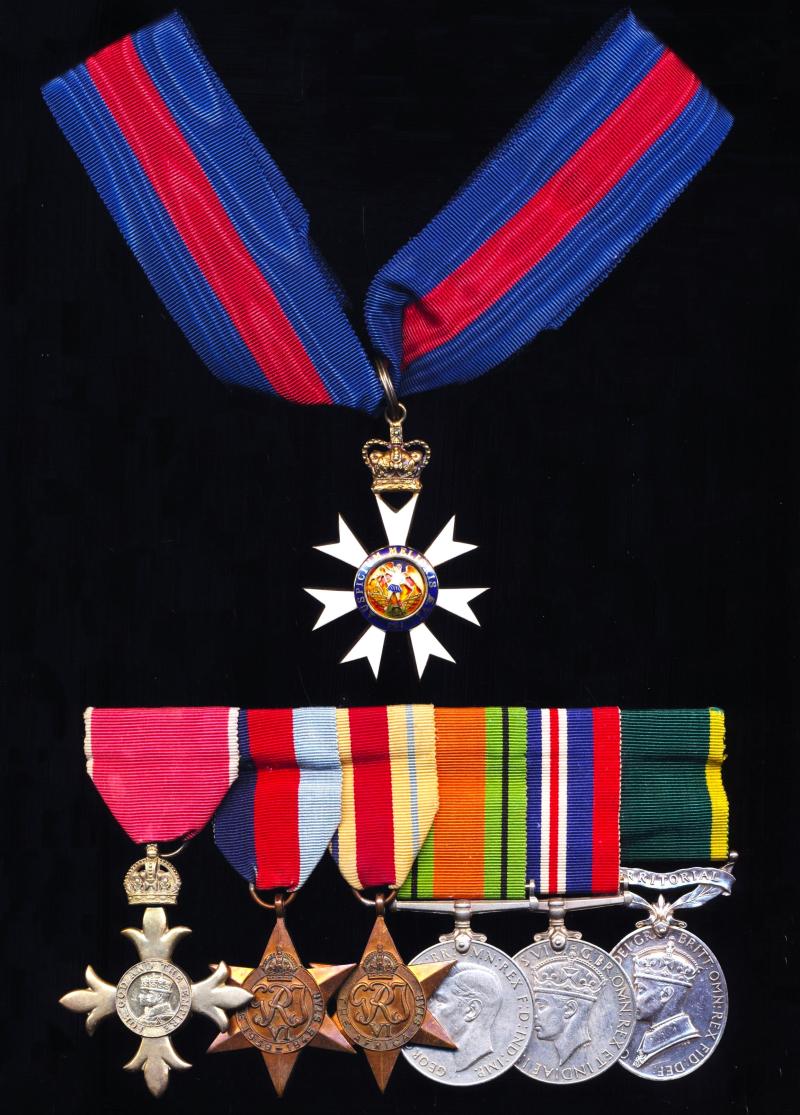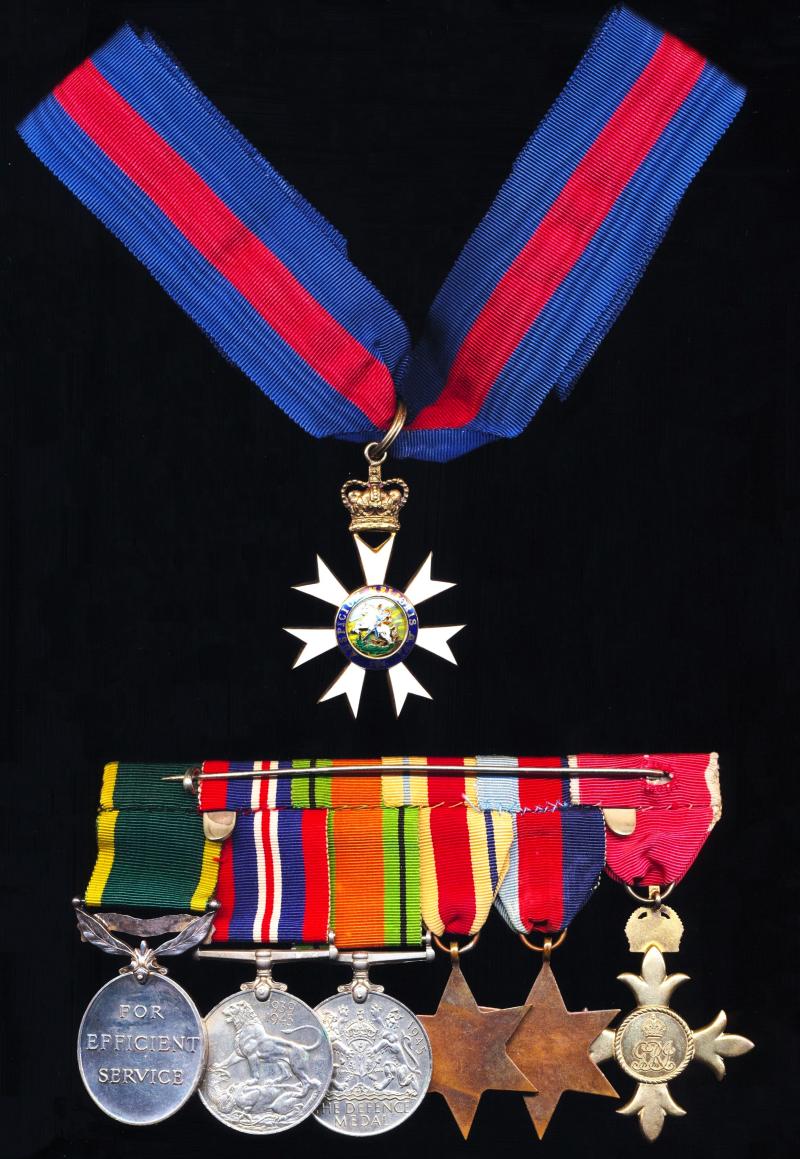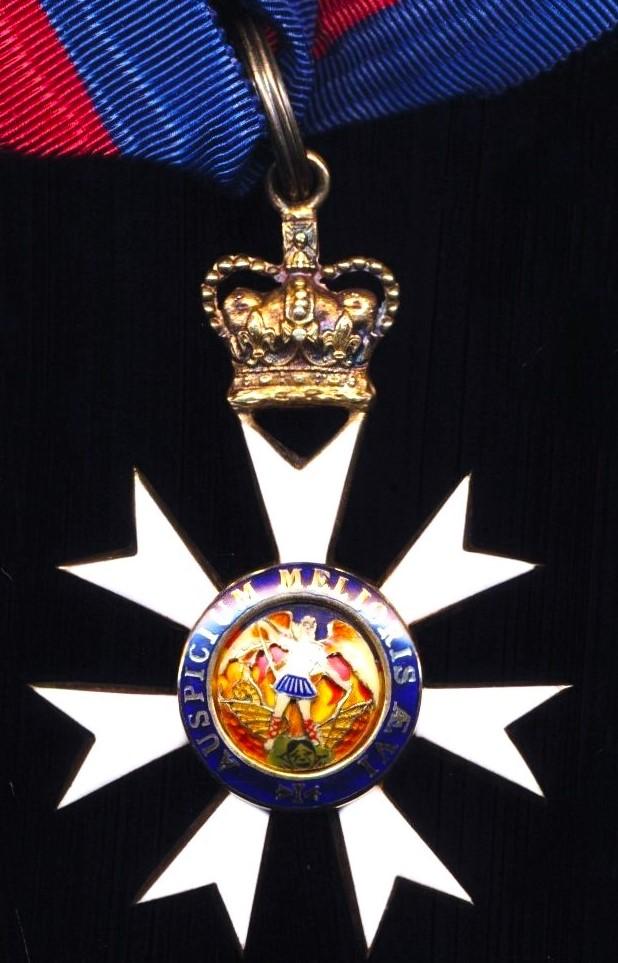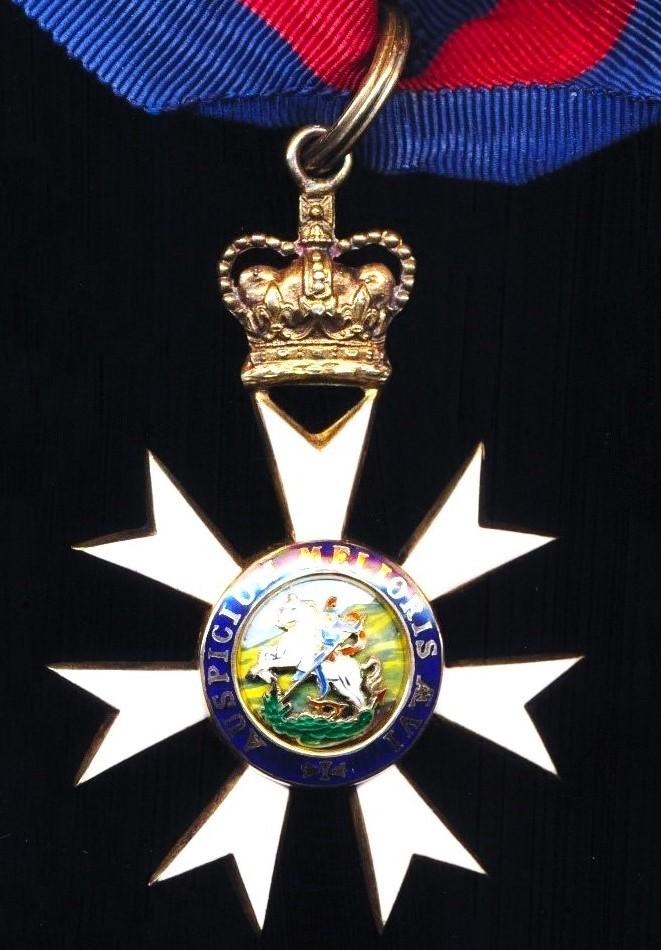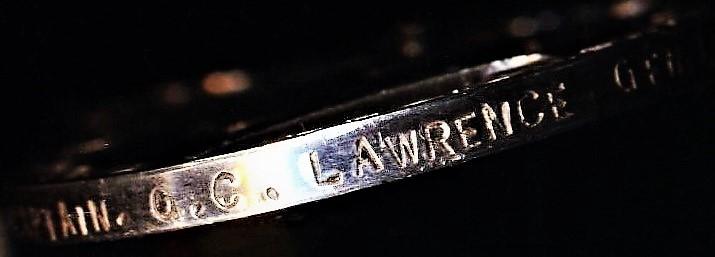A 'Twice Decorated' Colonial Service Officer's group of 7: Major Geoffrey Charles Lawrence, C.M.G., O.B.E., Colonial Service Financial Secretary & Acting Chief Minister Zanzibar, who in WW2 had served with the Somaliland Camel Corps
An outstanding 'Red Sea' interest' medal group to a British soldier who served at the Battle of Tug Argan with the Somaliland Camel Corps
- Companion of the Order of St, Michael & St. George. EIIR issue with full neck cravat & fittings
- Most Excellent Order of the British Empire (Civil). Officer's (O.B.E.) 2nd type
- The 1939-1945 Star. No clasp
- The Africa Star. No clasp
- Defence Medal
- War Medal
- Efficiency Medal. GVI first issue with bar 'Territorial' (Captain G. C. Lawrence, Gen. List.)
Brace of Orders: In respect of his service as a Colonial Service officer, Major Lawrence was awarded two x Orders as under:
C.M.G.: London Gazette 8 June 1963 (Financial Secretary, Zanzibar)
O.B.E.: London Gazette 12 June 1958 (shown as Financial Secretary, Somaliland)
The Times issue of 21 June 1994, published the below obituary on Geoffrey Charles Lawrence, C.M.G., O.B.E.:
Geoffrey Charles Lawrence, CMG, OBE, former colonial servant, died on June 5 aged 78. He was born on November 11,1915.
Had it not been for the Second World War Geoffrey Lawrence would have spent his career in Barclay's Bank. As it was, he found himself in the Horn of Africa, riding a camel across the desert like his more famous namesake, taking on the Italians at the Battle of Tug Argan and running the colonial exchequer in Zanzibar.
Born in London, the son of a civil servant in the Post Office, he joined Barclays after leaving the Stationers’ Company School and was posted to the bank’s headquarters in the City. But he also enlisted in the Territorial Army and was called up on the outbreak of war. He went with the Middlesex Yeomanry to Palestine, but then went down with measles followed by pneumonia. With his comrades-in-arms sent to fight in North Africa, Lawrence found himself, on his recovery, bored and redundant. In search of action he volunteered for the Camel Corps and, after training in Egypt, was posted to the British Protectorate of Somaliland.
Lawrence was amongst those troops forced to evacuate the Protectorate after retreating before the Italians at Tug Argan. After six months nursing their wounded pride in Aden, however, the British returned and recaptured the territory. Sergeant Lawrence was now commissioned and put in charge of the customs office under a new Military Occupied Territory Administration, stationed in Berbera.
A Major by the time the War ended, he applied to join the Colonial Service and in September 1947 was sent to Brasenose College, Oxford, on the first so-called Devonshire Course, under which new colonial officers were taught the practical skills of administrating the Empire. He and his wife spent the next 16 years in and around East Africa. Starting as a District Commissioner in Berbera, then classed as a hardship post by Whitehall, he was transferred to the secretariat in Hargeisa, where he rose from being an assistant chief secretary to become financial secretary in 1956. In 1960 he accepted the post of financial secretary in Zanzibar and remained there until 1963 when internal self-government was introduced. He was also a member of the East African Currency Council.
Out of a job at the age of 48, Geoffrey Lawrence he was approached by the Colonial Office with the offer of a temporary assignment. The temporary job gradually became permanent, and Lawrence was to become involved in, among other things, the Aden Crisis in the 1960s and the Geneva constitutional conference which followed. He retired in 1976, aged 61.
Disliking London and its surrounds, he spent his retirement in the country, pottering about his greenhouse and taking his West Highland terrier's for walks. He had no children and is survived by his wife Joyce.'
Unquote.
Somaliland Camel Corps: In September 1939, the Somaliland Camel Corps had a total strength of only fourteen British officers, one British non-commissioned officer, and 554 non-European (mostly ethnic Somalis) other ranks. Initially, the corps was placed under the garrison commander of French Somaliland. The four companies of the Somaliland Camel Corps were split among five different locations in the colony. Only "A" Company retained its camels, while the other companies had become infantry units
On the brink of war in 1939, the Somaliland Camel Corps was deployed across the territory at:
- Headquarters and Headquarters Company, The Somaliland Camel Corps: Laferug (Lafaruug - located near Mandheera between Berbera and Hargeysa along Route 1 Highway
- 'A' (Camel) Company: Hargeisa
- 'B' (Nyasa Infantry) Company: Tug Argan - southwest of Laferug near Hargeisa south of Assa Hills
- 'C' Company: Burao
- 'D' Company: Tug Argan (less 2 Platoons at Sheekh)
Field Marshal Archibald Wavell, Commander-in-Chief of the Middle East Command, was appalled by the under-equipped force that was supposed to defend an entire colony. In 1940, as a result of his concern, the unit was partially mechanised and further defences were built. However, before the upgrades could be completed, the funding ceased
At the beginning of the East African Campaign, the Somaliland Camel Corps, bolstered with a battalion of the Northern Rhodesian Regiment, had 1,475 men to defend British Somaliland. Reinforcements were eventually sent from Aden in a vain hope to stop the Italian invasion
During the Italian conquest of British Somaliland, the Somaliland Camel Corps skirmished and screened the Italian attacking force along the border before pulling back to more defensible positions at the Tug Argan gap. During the Battle of Tug Argan, fought between 11–15 August when the Italian invaders attempted to force the positions, Camel Corps officer Captain Eric Charles Twelves Wilson (seconded from the East Surreys Regiment), performed outstanding acts of gallantry for which he was subsequently decorated with the award of the Victoria Cross - and a unique award to the Somaliland Camel Corps. Wilson was the only VC recipient during the Italian invasion of British Somaliland. Wilson's inspirational recommendation for the Victoria Cross was published in the London Gazette issue of, 11 October 1940, and is quoted below:
The KING has been pleased to approve of the award of The Victoria Cross to :
Lieutenant (acting Captain) Eric Charles Twelves Wilson, The East Surrey Regiment (attached Somaliland Camel Corps).
For most conspicuous gallantry on active service in Somaliland. Captain Wilson was in command of machine-gun posts manned by Somali soldiers in the key position of Observation Hill, a defended post in the defensive organisation of the Tug Argan Gap in British Somaliland.
The enemy attacked Observation Hill on 11 August 1940. Captain Wilson and Somali gunners under his command beat off the attack and opened fire on the enemy troops attacking Mill Hill, another post within his range. He inflicted such heavy casualties that the enemy, determined to put his guns out of action, brought up a pack battery to within seven hundred yards, and scored two direct hits through the loopholes of his defences, which, bursting within the post, wounded Captain Wilson severely in the right shoulder and in the left eye, several of his team being also wounded. His guns were blown off their stands but he repaired and replaced them and, regardless of his wounds, carried on, whilst his Somali sergeant was killed beside him.
On 12 and 14 August the enemy again concentrated field artillery fire on Captain Wilson's guns, but he continued, with his wounds untended, to man them. On 15 August two of his machine-gun posts were blown to pieces, yet Captain Wilson, now suffering from malaria in addition to wounds, still kept his own post in action. The enemy finally over-ran the post at 5 p.m. on 15 August.
Unquote
Sold together with some copied research
A fine record of more than 30 years colonial & overseas service, in the Horn of Africa, Zanzibar and Aden Colony, to a British Colonial Service Officer including War Service against the Italians while serving with the Somaliland Camel Corps
The C.M.G. in EF condition with bright gilding and the enamel intact - a perfect EIIR issue example
Condition:The group GVF-EF
Code: 23076



